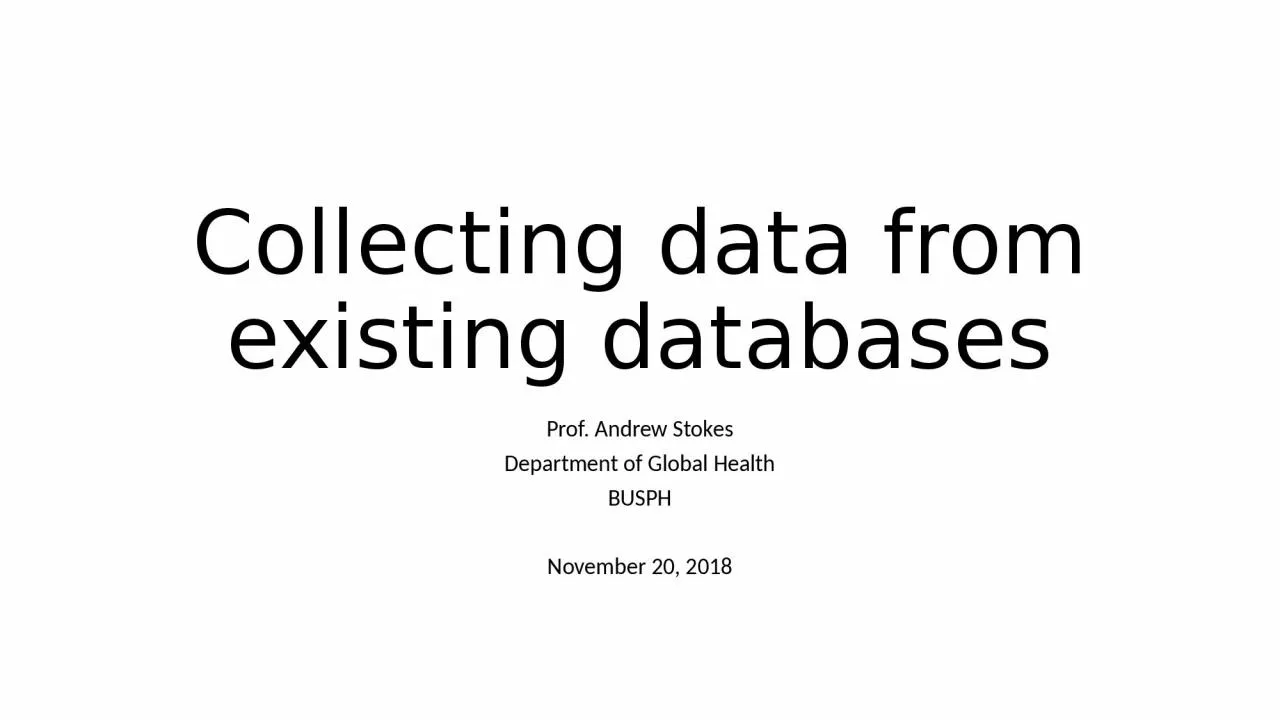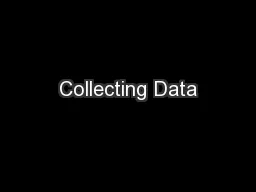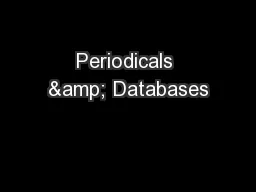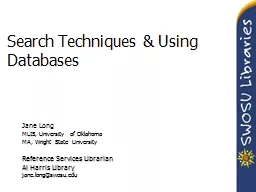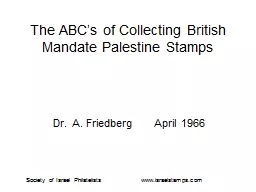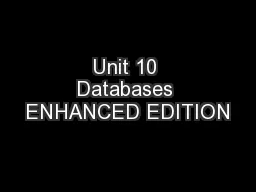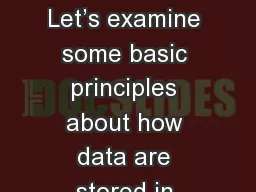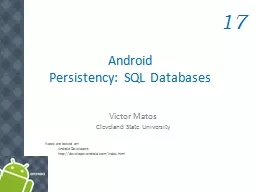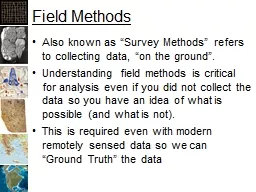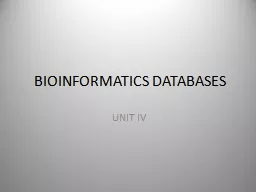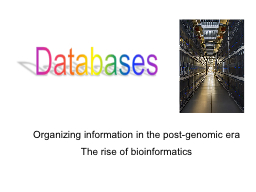PPT-Collecting data from existing databases
Author : genevieve | Published Date : 2023-07-22
Prof Andrew Stokes Department of Global Health BUSPH November 20 2018 Types of secondary data Survey data Vital statistics Administrative data Digital data Types
Presentation Embed Code
Download Presentation
Download Presentation The PPT/PDF document "Collecting data from existing databases" is the property of its rightful owner. Permission is granted to download and print the materials on this website for personal, non-commercial use only, and to display it on your personal computer provided you do not modify the materials and that you retain all copyright notices contained in the materials. By downloading content from our website, you accept the terms of this agreement.
Collecting data from existing databases: Transcript
Download Rules Of Document
"Collecting data from existing databases"The content belongs to its owner. You may download and print it for personal use, without modification, and keep all copyright notices. By downloading, you agree to these terms.
Related Documents

